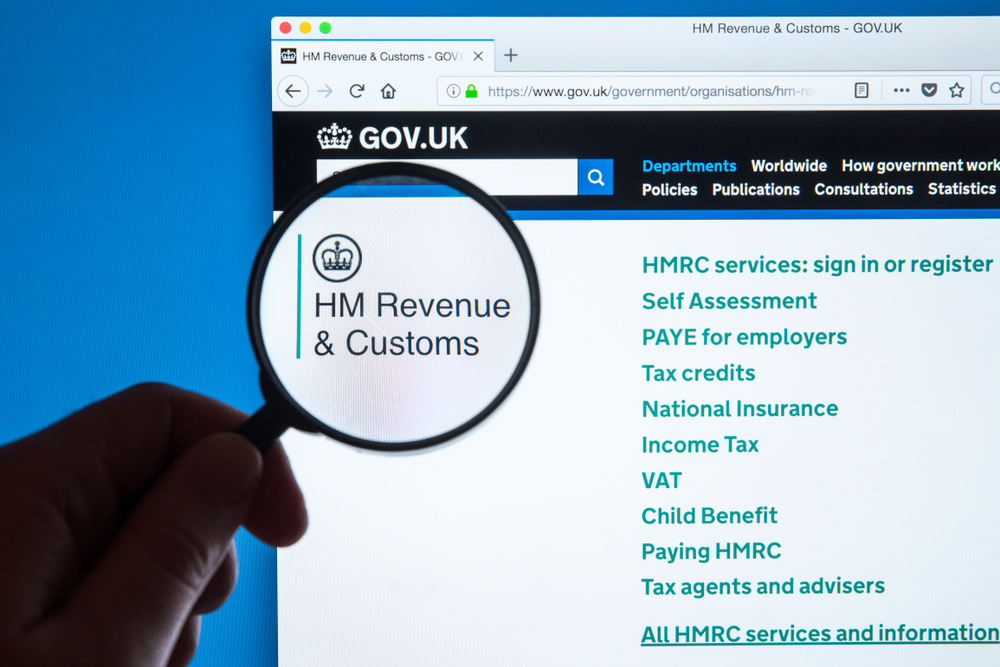- 40% reduction in civil servants defined as ‘tax professionals’ from 2016 to 2023
- The overall HMRC workforce has shrunk since 2010, despite the challenges of the department’s workload increasing as the tax regime has become more complex
- Salaries paid to senior HMRC staff have fallen by at least 20% when adjusted for inflation since 2010, and now lag the civil service average by around £2,000.
- HMRC doesn’t know how many fully trained tax professional staff it has
- Making Tax Digital programme (‘MTD’), flagship digital transformation scheme, beset with delays and increasing costs
- HMRC legacy systems present a significant risk to future data security
HMRC is being asked to administer an increasingly complex tax regime, to more taxpayers, using legacy IT systems and with reduced staff and budgets, while attempting to transition to being a modern tax authority. There are questions about how staff skills are developed and maintained to meet the tax risk areas that increasingly dominate the department’s workload. ‘Making Tax Digital’, along with other technology transformation projects, have the potential to represent a new working model for HMRC, but only if they are well managed and rolled out alongside a departmental wide workforce plan. In both areas, TaxWatch has concerns for HMRC into the future.
Introduction
In this, the last of our short series of blogs about the current state of tax administration and compliance, we look at the future of HMRC in terms of staff skills, IT systems and the challenges the department faces in modernising its operations to most efficiently deliver its core functions.
HMRC workforce
HMRC is the second largest Government department by number of employees, at 62,020 within what’s known as the “core department” in Q3 20231Whitehall Monitor 2024: Part 1 | Institute for Government. It has gone through cycles of expansion and contraction since 2010, but is one of only four departments that has shrunk in absolute terms since that year. There are peculiarities of age and grade profile, with a noticeable growth in staff aged over 60 years and below 30 years, with relatively fewer middle-aged staff, meaning that the median age matches the civil service benchmark of 442Civil service staff numbers | Institute for Government.
There has been a significant loss of long-serving and experienced officials through a combination of recruitment and pay freeze periods, ‘natural wastage’ and consolidation to fewer, larger, staffed offices since 2010. This has created a mentoring and staff development gap, where loss of experience moved more quickly than recent joiners could be fully developed into the roles. In some cases, the consequence has been requiring staff to take on additional duties beyond what could reasonably be expected, leading to stress and burnout.
Since 2016, the number of posts categorised as ‘Tax Professional’ has fallen by 38%, or 10,325 full-time equivalents3Whitehall Monitor 2024: Part 1 | Institute for Government. The salaries of staff within ‘Tax Professional’ roles are significantly below both other civil service professional streams, such as legal, project management, and IT. The Institute for Government (IfG) states: ‘’Low pay also makes it harder to recruit external talent into the civil service. IfG research found that comparatively low civil service salaries have been weakened further by pay restraint and led to the SCS employment proposition becoming less attractive, in particular for specialists.”4Civil service pay | Institute for Government
When compared to the civil service overall, median salaries for HMRC staff working within the Senior Civil Service and Grades 6 and 7 used to command a pay premium of around £2,000 per annum, but by 2023 this had reversed into a nearly £2,000 per annum pay ‘penalty’.
In the Civil Service staff survey, the proportion of HMRC staff responding that they strongly agree or agree with the following question was only 31%: “Compared to people doing a similar job in other organisations I feel my pay is reasonable”5Civil Service People Survey: 2022 results – GOV.UK (www.gov.uk) Question B37
HMRC’s annual report recognises the fundamental importance of having the right skilled and experienced staff. One of the key risks identified is ‘Capacity, Capability, and Engagement’, which states ‘We may not achieve high levels of business performance if our workforce lacks the necessary skills, capability and working experiences to enable our organisation to thrive.’ 6HMRC annual report and accounts 2022 to 2023 (publishing.service.gov.uk) P87 This risk is rated Amber overall (Probability High, Impact Medium).
How the composition of HMRC staff has evolved
There have been significant changes in the composition of the HMRC workforce, with a shrinkage at the junior grades, where many roles have been removed due to greater use of IT systems and self-service options (for example with changes to customer service teams, as discussed in our earlier blog7Hanging on the telephone: The front line of HMRC’s customer service? – TaxWatch (taxwatchuk.org). Given the size of HMRC, there is a substantial proportion of staff at junior grades who are on low salaries, including customer service staff being paid the national minimum wage. The PCS union representing junior HMRC staff notes “The long-standing issue of low-pay is still endemic, with around 30% of staff on the National Minimum Wage; and if HMRC is to retain the skilled staff it needs, there needs to be substantial measures taken to address that low-pay issue.”
HMRC, alongside the wider civil service, has been grappling with issues of recruitment and retention of staff, caused by below-real terms budget allocations and multi-year pay awards, in various ways – especially at higher grades. Some efforts, which need to be built on further, relate to identifying staff who want to carve out a professional career pathway based on technical skills, to progress into more senior positions but not necessarily take on line-management responsibilities. The critical question is, perhaps, whether there are strong enough incentives to encourage longer stays in roles, to develop the necessary depth of experience at senior levels to deal with the most complex areas of work8https://www.instituteforgovernment.org.uk/publication/whitehall-monitor-2024/part-2. The benefit of HMRC’s size is that there is a wide variety of roles available for colleagues to switch career direction over time without their experience being lost to the department, but there is a need to also value expertise more explicitly in the future.
HMRC has been affected by the cross-civil service phenomenon of ‘grade inflation’, discussed by the IfG, which says: ‘The median salary of the civil service, overall, has fallen by 3% since 2010 – less than the median real-terms changes at each individual grade*. This is being driven by the increased seniority of the civil service. While it is likely that at least some of this is a genuine change in composition, it is also likely that some civil servants are being promoted to boost their salaries, to stop them from leaving the civil service and to manage morale, rather than because their skill-set and responsibilities demand it. These promotions are likely to be focused in the middle grades, where there are more roles people can be promoted into than at senior levels.’9Civil service pay | Institute for Government
* When adjusted to account for inflation in the intervening 13 years, the decline in median salaries for particular grades is substantially starker, especially for the senior civil service, at 20% across the whole civil service, and 24% for HMRC10Using GDP deflator GDP deflators at market prices, and money GDP December 2023 (Quarterly National Accounts) – GOV.UK (www.gov.uk) and Civil Service statistics – GOV.UK (www.gov.uk).
HMRC’s employee engagement score ranks third from bottom of all Government departments within the Civil Service (IfG figures derived from the Civil Service People Survey 2022) at 59%11Civil Service People Survey: 2022 results – GOV.UK (www.gov.uk). How satisfied HMRC staff are about their pay, departmental leadership and how change is managed are all particularly low, trailing the civil service average by 4.6 points.
Fully qualified tax professionals within HMRC
The in-house tax technical development programme, which is seen as equivalent to the Chartered Tax Adviser qualification, is currently known as the Tax Specialist Programme. Very limited numbers start this course each year, and the numbers having completed it in recent years are suggestive of a high drop out/non completion rate, despite the fact the course has been scaled back to three years duration (previously it was four years). There has been a trend of accepting existing civil servants onto the course with much lower entry requirements, for what remains an academically rigorous course. The numbers finishing the course are insufficient to take over from the retirement and departure rates of staff that came through the qualification and built up decades of experience, who are now reaching the end of their careers. HMRC doesn’t track the staff holding these highest qualifications, which is so fundamental to workforce planning and staff skills development.
A perennial problem for HMRC is also that staff with significant internal training and experience are much sought-after within private practice, especially in particular areas that have grown disproportionately in recent years, such as Dispute Resolution and Investigations. Whilst this has always been a factor, recent changes to the HMRC office estate combined with mandatory 60% office attendance requirements and pay differentials risk exacerbating this trend further.
Recruitment of fully qualified tax professionals from the private sector has largely been unsuccessful because of the inability to offer comparable salaries. According to the 2023 Tax Salary Guide produced by recruitment agency Pure, the minimum package for a manager in the private sector is £85,00012Tax Salary Guide 2024 | Download your copy today (puresearch.com), whereas the equivalent HMRC grade 7/6 is on a median salary for the 2022-23 year of £58,200.
Current IT systems used across HMRC
Having the right level of IT facilities to match the department’s core functions is absolutely key to operational effectiveness. Given the size and scale of HMRC’s operations and the existing reliance on legacy systems, a focus on getting the right infrastructure in place and maintaining it over time is critical.
The 2022 Technology Sourcing Programme report noted that “HMRC has one of the largest and most complex IT estates in Europe with over 600 systems, 800 terabytes of data, 1,000 IT changes a month and a 24/7 IT operation. It serves 45 million citizens and more than 5 million business taxpayers.”13Technology Sourcing Programme: Accounting Officer’s assessment summary – GOV.UK (www.gov.uk)
Demonstrating the size and scale of the IT modernisation project to be delivered in the coming years, HMRC has 21 projects in the Infrastructure Projects Authority 2022-23 annual report, with a total value of £19.9bn 14IPA-Annual-report-2022-2023.pdf.pdf (publishing.service.gov.uk). Two projects which are particularly relevant to HMRC compliance and customer service outcomes within the strategic plan are ‘Securing our Technical Future’ (designed to ‘stabilise’ HMRC’s aged IT estate, migrating from legacy systems and data centres onto modern and secure destination platforms and cloud systems) and ‘Single Customer Account’ (aiming to create ‘task-based, personalised and intuitive multi-channel digital experience’ to improve customer service and therefore voluntary compliance). However, both of these projects were rated Red (‘Successful delivery of the project appears to be unachievable. There are major issues ….. which at this stage do not appear to be manageable or resolvable’) as recently as 2021-22.
Data security and reliability
HMRC has access to vastly more data than ever before, including recent developments such as the Common Reporting Standard (CRS), which is an automatic exchange of financial information between the UK and 114 participating overseas jurisdictions in 202415IEIM400090 – Common Reporting Standard: Participating Jurisdictions – HMRC internal manual – GOV.UK (www.gov.uk). This obviously raises issues about system resilience and security of the data held across these systems. With such a large quantity of sensitive financial data, the impact a potential hack or data breach would have is manifestly large.
HMRC recognises these issues within its latest annual report as Key risk 9: ‘Technology Resilience and Reliability – A major IT failure or security breach that results from the current condition of HMRC’s IT infrastructure could harm our business operations permanently or temporarily, depending on the incident’s severity’. This issue is rated Red (denoting high impact and high probability). To address this risk and bring it back within a tolerable range, considerable capital investment will be required. But it is not clear whether HMRC management has requested these funds but been unsuccessful so far, or whether any request has not been focused on this particular risk area. TaxWatch calls for sufficient funds to be allocated to this, given the knock-on impacts in the case of a major IT incident.
A separate risk for the security of HMRC IT systems is their vulnerability to fraudulent attacks in relation to tax refund claims. The NAO16Managing tax compliance following the pandemic (nao.org.uk) reports that there has been a considerable reduction in the amount lost to fraud since 2020-21, compared to 2019-20, with £1.1bn of payments stopped by HMRC. Fraudulent claims have returned to expected levels by July 2021 of between £52 million and £219m – a considerably wide range.
Making Tax Digital
The most high-profile project is Making Tax Digital (MTD), a flagship digital transformation project focused on automation and collation of business tax records. This is already in place for VAT and will be followed by Corporation Tax and Income Tax for unincorporated businesses.
There are widespread misunderstandings of the difference between MTD (which many more seem to be aware of) and the Single Customer Account. In order for MTD to achieve its objectives, widespread automation and upgrades are required to current databases and systems. In relation to MTD, the NAO’s key findings concur: ‘There is a strong case for HMRC’s move to modern digital systems. Its legacy systems are costly to run and maintain and lack resilience. Modern digital systems also provide the foundation for improving services, including a joined-up view of taxpayers’ affairs.’17Progress with Making Tax Digital (nao.org.uk) p7
In a scathing evaluation, the NAO concluded: ‘Making Tax Digital for Self-Assessment is at least eight years behind the original timetable and HMRC has not resolved some important elements of its design….. HMRC’s estimated costs have increased to £1.3 billion (a 400% increase in real terms since 2016), with £642 million already spent by March 2023.’18Progress with Making Tax Digital (nao.org.uk) p9
The MTD project is built on the assumption that it will make it easier for taxpayers to calculate their tax liabilities correct first time, primarily by reducing error and carelessness. However, the project has suffered from issues that are common to large IT projects across the public sector – particularly cost-benefit analyses which have consistently been prone to misstatement. The NAO concluded: ‘HMRC has significantly understated the cost for customers to comply with MTD in its cost-benefit analysis for recent business cases….. The exclusion of transitional costs means business cases seeking further funding for MTD presented partial analysis of the programme’s costs and benefits. HMRC’s May 2022 business case contained the most significant omission, with around £1.5 billion of costs to VAT and Self Assessment customers excluded from the cost-benefit analysis.’19https://www.nao.org.uk/wp-content/uploads/2023/06/progress-with-making-tax-digital.pdf P40
Improving HMRC’s management and delivery of these projects requires the department to have access to the necessary expertise and system design. Ensuring tax and IT professionals work together on design is vital to make certain systems achieve what they are required to, and to help HMRC staff work more efficiently. New technology should only be embedded once thoroughly road-tested and evaluated to be fit for purpose, including ongoing support for users from system developers, plus full user training provided to staff. There must be funding for ongoing system maintenance and future modifications. Where systems are designed to be used by taxpayers themselves or their agents, they need to be intuitive and reflect the type of routine queries and data submissions needed.
Another consideration in future-proofing HMRC’s staff and systems is adopting and maximising use of developments such as Artificial Intelligence (AI), given progress in harnessing these emergent technologies by the tax profession20 … Continue reading. For skilled HMRC staff to be effective, the department must be resourced to keep pace with these broader developments. In the long term, this maximises productivity and creates engaging and fulfilling work.
Diploma in Tax Technology: where skills and systems collide!
The Diploma in Tax Technology (DITT) qualification21DITT | Chartered Institute of Taxation, recently devised and launched by the Chartered Institute of Taxation (CIOT), reflects the increased importance of IT software in compiling and submitting tax data. Given the importance of these aspects of tax, it feels like HMRC staff need this qualification just as much as tax professionals working in private practice. It has been developed in a modular format to fit around full-time work. It would be interesting to find out if resources have been allocated to sponsor HMRC tax professionals to complete this qualification, and where these trained staff will be deployed within the department.
Conclusion
It’s not clear that HMRC has been working from a proper workforce plan in recent years, but this clearly needs to be introduced. The aim should be to work towards a workforce comprised of confident, empowered and appropriately skilled staff, who are remunerated appropriately to reflect the valuable work they undertake. Investment in technology for the benefit of both customers and staff will support and complement this. Both areas require long-term financing, given they represent very major investments into human and physical capital for the department into the future.
References



